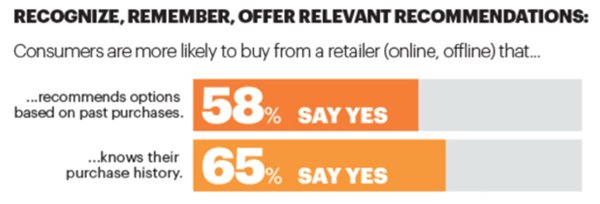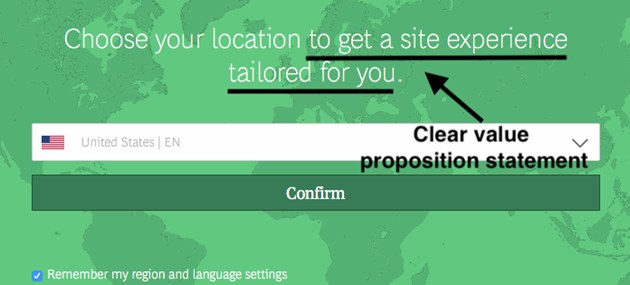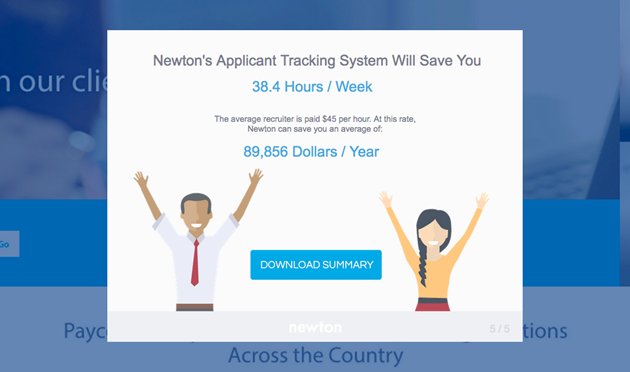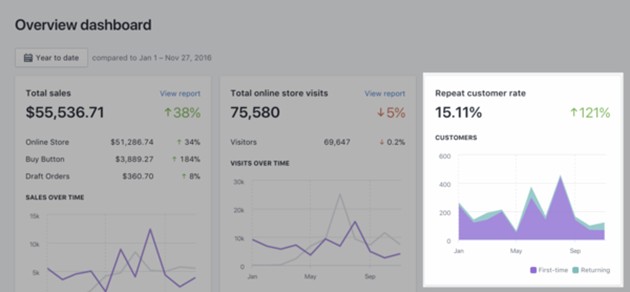Personalization is changing marketing these days. Big Data and machine-learning systems are taking on a larger and more intricate roles, and businesses now have access to the kinds of information they need to create content tailored to individuals.
Plus, personalization is easily one of the most effective ways to turn visitors into customers: Fully 75% of shoppers agree that content customized around their interests influenced their decision to purchase.
However, many marketing teams still struggle with creating the kind of content that people crave. Half of online customers report they are "underwhelmed" with companies' personalization offers, and nearly 40% of marketers say they do not have systems in place needed to offer this type of targeted messaging.
Creating personalized content that communicates the value proposition that matches each individual customer is the key to making sales in today's complex marketing landscape.
If you are ready to create more personalized content that provides meaningful value, there are some things you need to know. Let's dive in.
1. Be intentional with customer data
Of course, capturing the necessary consumer data to generate customized results is the secret to generating personalized content.
First, you must first decide what type of personalization you will offer. For example:
- Will you be offering personalized emails with shopping recommendations based on previous purchases?
- What about creating interactive content that offers customized information based on quizzes and assessments?
- Will your business offer personalized landing pages that tweak content features for each visitor?
Once the objectives have been established, the next step is to define what data must be collected and how to go about it.
For example, if you want to send personalized shopping recommendations to previous customers, you must know what kinds of items they tend to purchase. POS system data can provide the exact records for each customer's transactions, along with information on frequent bundle purchases for logical cross sells.

Source: EYStudios
No matter what strategy you and your team go with, ensure that your data-collection tactics inspire consumer confidence. Many customers worry about the security of their private data these days, especially when in relation to shopping online and using social media. But when brands are transparent about data collection and offer clearly stated value propositions, people are far more likely to share their information.
Let your audience know why you are asking for their data and what you will do with it, and include an opt-out option for those who do not wish to participate.

Source: BCG
2. Focus on emotion over logic
Multiple studies have determined that when making purchases consumers are influenced far more by emotions than logic. One study even concluded that 95% of the buying decision is made subconsciously and depends solely on feelings rather than reasoning.
Personalized content can elicit positive emotions that can lead to more sales and improve customer lifetime value. According to one study, when consumers felt "excited," "appreciated," or "happy" during an interaction with a company, they were up to 57% more likely to repurchase from that company.

Source: Experience Matters
Interestingly enough, customized content can create these exact emotions when it is done properly. Personalization tugs at two major psychological triggers that have an effect on every human's brain: being in control, and being recognized on a personal level.
Show your customers exactly what is in it for them when they buy from your business. For example:
- Personalized content such as a savings calculator show exactly how much they will benefit by switching to your company.
- Custom-made shopping recommendations that are based on customers' preferences saves them time from searching for the things they want.
- Landing pages that are tailored to their location, interests, or budget will display more relevant content that fits their needs.

Source: SnapApp
By making the value clear while simultaneously triggering emotional connections that influence action, your personalized content can go a lot further in gaining conversions.
3. Track the right metrics
Obviously, it is impossible to determine a strategy's effectiveness if the results from its execution are not accurately tracked and analyzed.
Determining the ROI of content marketing has traditionally been a big challenge for marketing teams; however, much of content marketing is typically focused more on building brand recognition or authority and less on making the sale. Personalized content, on the other hand, can lead directly to conversions, making it much easier to track and record.
To see whether your personalized content is working, watch three key metrics:
- Is your content increasing the revenue per visit from each customer? Sending out customized offers or shopping suggestions is a great approach, but only if it's pushing your customers to buy. When customers receive personalized coupons, they tend to spend up to $50 or more. If your numbers aren't showing results like that, it may be time to tweak your tactics and make them more relevant to your customers.
- Keep an eye on the number of repeat customers resulting from personalized content. We know that personalized content can affect emotions that lead to loyalty, so if this number shrinks or remains the same, it could be a sign that the emotional connection is simply not there.

Source: Shopify - You need to be conducting market research to collect data on customer sentiment in regards to your personalized content. Sentiment analysis that measures consumer satisfaction or gathers suggestions for better strategies can be just what your team needs for better content. This one is not black and white: It will require a bit of reading between the lines and identifying patterns as to what people are saying.
* * *
With so many competitors vying for your customer's attention, personalization could be the answer to creating a sense of brand loyalty. Map out your strategy and define the exact data points that are needed to support it. From there, focus on connecting with customers emotionally by stating clear, personal value propositions that are tailored just for them. And, finally, track, analyze, and adjust along the way for better outcomes.
The process of producing, gauging, and refining personalized content is never-ending—and rewarding!




